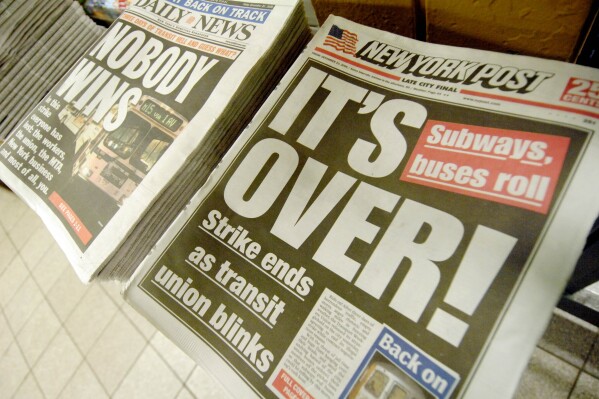Videos of homeless housing in Hawaii and California misrepresented online as FEMA camps
Michael Vierra looks at his destroyed house for the first time after the wildfire in August, on Tuesday, Sept. 26, 2023, in Lahaina, Hawaii. The Associated Press on Wednesday, Sept. 27, 2023, reported on social media posts falsely claiming that a video shows “concentration camps” that the Federal Emergency Management Agency is building in Hawaii. (AP Photo/Mengshin Lin)
CLAIM: A video shows “concentration camps” that the Federal Emergency Management Agency is building in Hawaii.
AP’S ASSESSMENT: False. The video includes snippets from at least three separate housing projects that FEMA was not involved in. One clip shows “tiny homes” built in Hawaii for military veterans and homeless people. Another depicts a California city’s similar efforts to provide homes for people without housing using the tiny house model. Other clips in the video show quarantine housing in Australia during the COVID-19 pandemic.
THE FACTS: As Maui residents begin returning to their neighborhoods following last month’s devastating wildfires, a video circulating on social media is suggesting that curious looking homes are sprouting up.
The three-and-a-half minute long video purports to show newly constructed cabins somewhere on Hawaii.
The narrator notes at one point that some of the structures have pipe systems on their exterior, which he suggests could be used by “nefarious officials to easily pump noxious or incapacitating gas on a cabin-by-cabin basis.”
“Hawaii news on strange concentration camp,” the text over the video reads in part.
“FEMA Camps,” wrote one Facebook user who shared the video.
But the homes shown in the video weren’t constructed by FEMA and have nothing to do with the federal agency’s ongoing response to the Maui fires. In fact, none of the projects are even located on the island of Maui.
FEMA Press Secretary Jeremy Edwards also said the federal agency hasn’t built any housing anywhere in Hawaii in response to the deadly blaze.
“This rumor about FEMA built concentration camps and the video spreading it are categorically false,” he wrote in an email Wednesday. “Wildfire survivors are currently being provided housing in hotels and other privately owned lodging on Maui by the American Red Cross in coordination with the State of Hawaii and financed by FEMA.”
The first project shown in the video is actually Kama‘okū Kauhale, a community of tiny homes for military veterans and homeless people in Kalaeloa, on the Hawaiian island of Oahu.
The clip comes from an April 2022 KITV-TV report in which new residents were welcomed to the 36-unit development of cabanas, which also includes a community center with a communal kitchen, bathrooms, laundry, medical clinic and lounge area.
The chyron from the news segment is even visible in the widely shared clip. It reads: “U.S. Vets Hawaii Hosts ‘Welcome Home’ Event. Kamaoku Kauhale Tiny Homes Community.”
Cindy Monticue, a spokesperson for U.S. Vets, the nonprofit organization that manages the community, confirmed Wednesday that the development is located at the organization’s Barber’s Point facility, which includes other housing and programs for homeless veterans.
“It’s not affiliated with FEMA and has nothing to do with the fires,” she said in a phone interview Wednesday of the tiny homes. “The village opened long before the fires.”
The second development shown in the widely shared video is located in Chula Vista, a southern California city between San Diego and Tijuana, Mexico.
Michele Clock, a spokesperson for the city, confirmed the rows of small white cabins shown about a minute into the video is Chula Vista Village at Otay, a temporary housing development for homeless people that opened in May with the goal of helping them return to the workforce and eventually secure permanent housing.
The development features 65 mini homes, each furnished with beds, shelves, a table and chair, locking doors and windows and heating and air conditioning.
“This shelter is completely unrelated to the wildfires in Hawaii,” she wrote in an email. “FEMA did not have any involvement in the building of this shelter, nor was any FEMA funding used for the shelter.”
The pipes shown on the exterior of the buildings are for a fire suppression system, Clock added.
“Individual sprinklers were a safety feature required by our Fire Dept,” she wrote. “In other words, the pipes are part of a sprinkler system to keep those people using the tiny homes safe from fires.”
The remaining clips in the widely shared video come from Australia, are all at least a year old and come from a social media user who produces video documentaries under the moniker “Tim Truth.”
The text on the clips confirms as much, with one reading: “Inside an Australia Hotel Covid Camp.”
___
This is part of AP’s effort to address widely shared misinformation, including work with outside companies and organizations to add factual context to misleading content that is circulating online. Learn more about fact-checking at AP.



